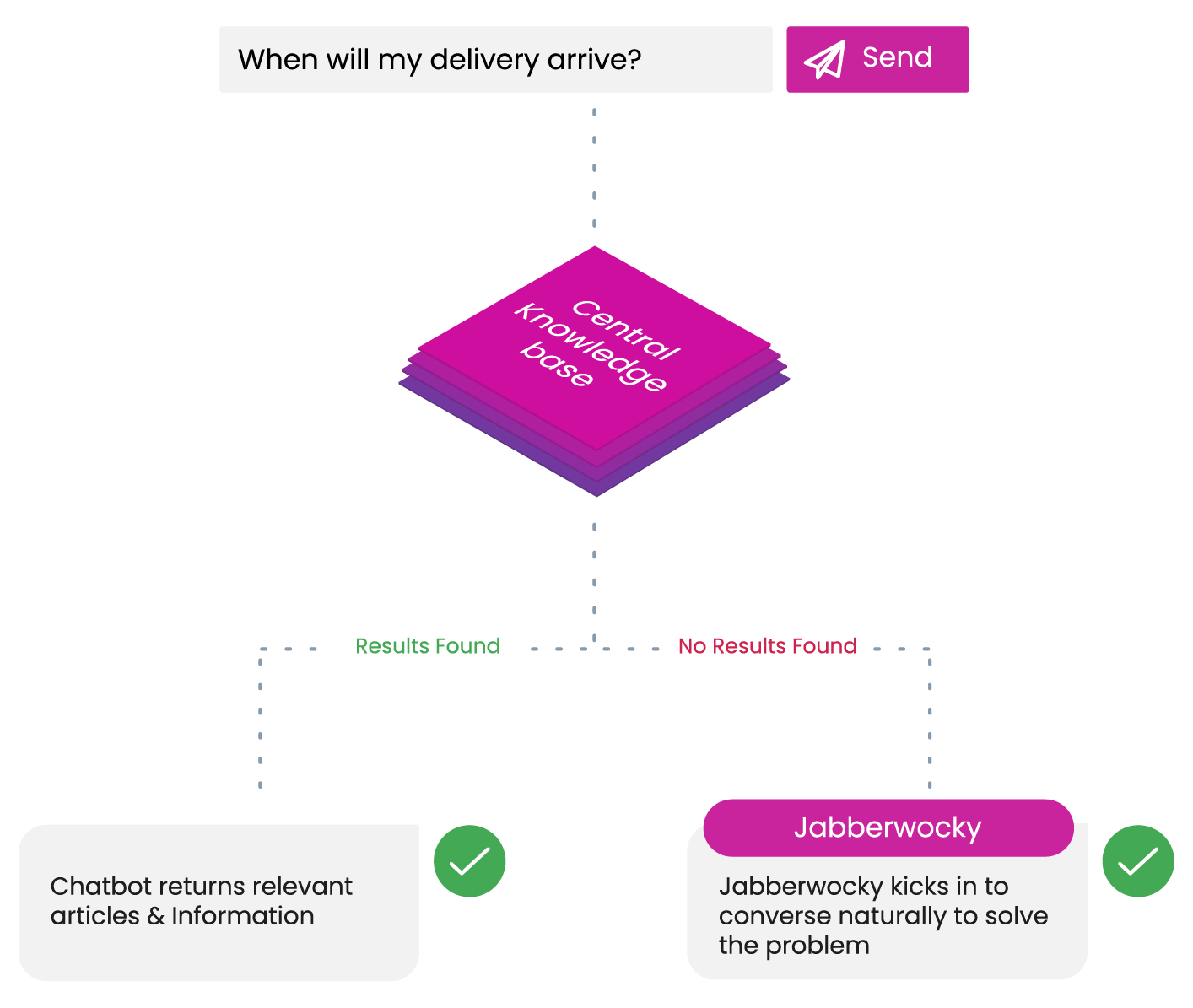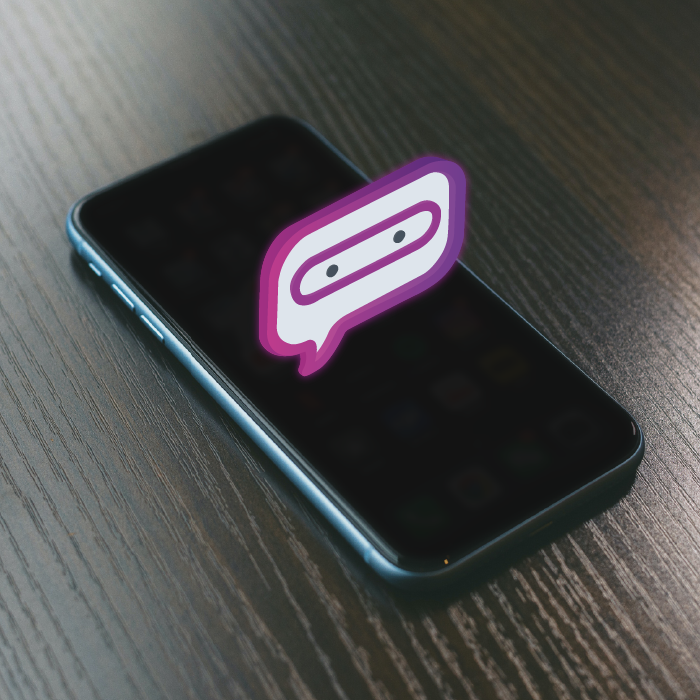Synthetix have the complete platform of customer service tools.
Book a demo of any of our products below
An Introduction to Chatbots
A chatbot is a software application primarily used by businesses to facilitate customer service. Unlike agent-assisted contact channels such as live chat or telephone, chatbots rely on AI to resolve customer queries. The tool that enables human and machine interactions has become increasingly popular over the last decade, often acting as customers’ first online port of call, but how did the chatbot become so sought after?
The first chatbot, ELIZA was created in the 1960s before the term ‘chatbot’, or its predecessor, ‘chatterbot’ was invented. ELIZA was an advance in computer science but was not made with the intention to assist customer service.
Following ELIZA, there were several failed attempts at producing an effective chatbot including the likes of Cleverbot and Tay AI. What these bots had in common was unregulated training data; the way in which they ‘learnt’ was from the information fed to them by their users – the public – opposed to being configured by professionals using benchmarking and objectives. The result of which led to Tay AI’s termination following a spurt of offensive views it shared on Twitter.
You can read more about the history of AI bots here.
Today we are familiar with a different type of bot – the customer service chatbot. Unlike other chatbots whose purpose was simply novelty – to be played with and to provide entertainment – the chatbots we are used to today are there to provide help, automating customer queries, providing good CX and subsequently helping customer service teams.
How Do Customer Service Chatbots Work
Customer service chatbots are built on AI and through Natural Language Processing (NLP) and Machine Learning (ML) principles effectively ‘understand’ customer queries to provide adequate responses. Chatbots integrate with companies’ centralised knowledge so that depending on what query is entered, they can utilise smart algorithms to identify and serve the most relevant knowledge articles to customers.
NLP is the combination of Natural Language Understanding (NLU) and Natural Language Generation (NLG) and is constantly learning from each customer interaction to be as optimal as possible over time. NLP is responsible for unpicking the customer query, dissecting the sentence into intent-based keywords, subjects, grammatical quirks and keywords popularity to analyse, interpret and present an appropriate result.

It’s important to note that not all chatbots offered today are powered by AI, some are built on rule-based automations. Such chatbots can only respond to queries that exactly match their pre-loaded responses, leaving no room for query variations or synonyms. The result of which is “I’m sorry, I don’t understand the question. Please try again” served to customers more often than a genuine result.
This is why AI-powered customer service chatbots are so valuable to business. They are programmed to understand that there are multiple ways that a question can be asked, an array of synonyms and even idiosyncrasies. NLP helps to eradicate unhelpful responses.
Some chatbot specialists include additional layers of search for chatbots to consult if query intent is unclear. Synthetix’s system, “Jabberwocky”, for instance, unpicks query sentence structure, analysing grammar and a range of word classes. Its utilisation of proprietary NLP enables brand personality to be portrayed, increases answer accuracy and ensures that the customer always receives a conversational response.

Find out about the advantages of chatbots in customer service, here.
Why Use Chatbots In Customer Service?
According to IBM , chatbots in customer service can solve 80% of all routine queries – including questions such as:
- What is your returns policy?
- Where is my delivery?
- Can I apply for a refund?
Such routine questions make up a large percentage of overall contact volume, so when they are automated through AI and solved at scale, operational costs are significantly reduced. Without chatbot solutions in place, customer service teams would otherwise deal with routine queries, creating a backlog of tickets and an accumulation of overheads and staffing costs.
30%
Did you know?
Chatbots can save businesses up to 30% in customer service costs.
It isn’t just the bottom line that benefits from chatbots’ capabilities to automate routine queries, agents are given a greater bandwidth in which they can deal with customer issues that are complex or sensitive by nature, rather than the same queries time and time again.
A study revealed that 64% of agents with AI chatbots are able to spend most of their time solving complex problems, compared to 50% of agents without AI chatbots. This in turn contributes to positive employee morale – their perceived quality of work is richer when the repetitive, mundane element is removed, promoting job satisfaction and therefore productivity.
Find out how chatbots are supporting agent morale and productivity, click here.
Customer service chatbots have a key role to play in customer satisfaction. Not only does NLP ensure that customers are served the very best results, encouraging improvements in First Contact Resolution (FCR) rates, but the channel itself is easy to use and convenient. Offering 24/7, real-time results, it’s a channel that customers can depend on, if for example, a chatbot provides customers critical information in an out of hours emergency, this of course is reflected in CSAT scores.
The adoption of chatbots also helps to optimise CX through Machine Learning (ML) principles and decision tree technology. ML principles enable chatbots capabilities to learn, store and utilise trends in customer behaviour, for example popular queries, colloquialisms or preferences are collected and then used for future interactions making the overall CX more enjoyable.
Effective customer service chatbots provide a smooth and enhanced customer journey through decision tree technology. To reach a successful result, an agent will usually ask customers a series of questions, but when there is no agent involved, how is this facilitated? Decision trees are configured so that chatbots can intervene at the problem-solving stage and ask such questions. This helps customers reach their destination result quickly and effectively, seamlessly transferring them to agent-assisted channels like live chat if necessary.
Types of Customer Service Chatbots
There are 3 types of chatbots that are commonly used in customer service, these are:
- Menu-based chatbots
- Keyword recognition-based chatbots
- Contextual chatbots
Menu-based chatbots use clickable menu buttons to help customers reach the result they require. Similar to the rule-based chatbot discussed previously in this article, this type of chatbot relies on one specific set of data and therefore cannot offer results based on anything outside of this. Although menu-based chatbots might be suitable for small businesses with super basic requirements, for instance providing answers to FAQs, they are simply not capable of answering queries more advance than this. As a result, the precision and efficiency of answers served suffer.
Read: The 8 Biggest Chatbot Mistakes That Are Costing You Money
Keyword recognition-based chatbots utilise AI, isolating and analysing each keyword to determine the best results. With each query that is entered, this type of chatbot will concentrate on the keywords that warrant action, for example “order”, “account”, “payment” and verb word classes such as “setup”, “cancel”, “refund” to piece together the most suitable response for the question at hand. Keyword recognition-based chatbots, however, are not effective at recognising multiple variations of questions.
Contextual chatbots utilise both AI and ML principles, proving particularly valuable to customer service amongst a multitude of companies. This chatbot type learns and stores useful information to utilise in future conversations. By remembering certain customer preferences and behaviours, conversations with the same customer during different sessions are of optimal efficiency and CX. A large portion of time can be saved if the bot simply asks the customer if their preferences are the same this time around, opposed to carrying out the same question process time and time again.
In customer service, chatbots are not only an expectation but they can assist teams quite significantly whilst complimenting companies’ overall customer service toolkits. As chatbots are more widely accepted and businesses understand the importance of AI-powered tools, we can only expect bigger, more impressive things for the bots of customer service.
If you’d like to know more about the benefits of conversational chatbots, click here.
If you enjoyed this article and would like to find out more about chatbots,
you can do so here . Or, if you’d like any chatbot advice or help with your organisational needs, please


